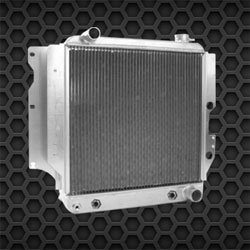Indeed, the development of the Wagoneer was an essential, defining event for an entire class of vehicles that would spring up over the next 40 years, bringing together four-wheel drive, ample passenger and cargo room, and ever-greater levels of luxury.
Willys Motors, since 1953 a division of Kaiser Industries, had the market for light-duty four-wheel-drive vehicles nearly all to itself for years. It began producing the CJ-2A -- the civilian version of the already-famous wartime "jeep" -- in mid 1945, then introduced four-wheel-drive trucks in 1947.
Although the four-wheel-drive market wasn't large in the immediate post-World War II years, Willys dominated it. But for 1961, there appeared a new contender. International Harvester introduced its Scout line of modern four-wheel-drive vehicles. The Scout's target was the Jeep CJ, but with more room and comfort. Suddenly, Jeep was facing serious competition.
Willys management sprang into action. In early 1961, funding was approved for a new-product program that would include an entirely new range of Jeep vehicles and a new engine.
Chief engineer A.C. Sampietro would handle the nuts and bolts, while the styling job was assigned to Brooks Stevens, the talented independent designer Willys had on retainer, and the tiny in-house Jeep styling staff under Jim Angers.
When Stevens was asked to come up with an all-new lineup of Jeep station wagons, pickups, and panel trucks, the project probably seemed a little bit like déjà vu.
A similar request during the mid-1940s was how Stevens began his affiliation with Willys. Back then, he labored on a series of postwar designs that resulted in the Jeep Station Wagon in 1946. In 1949, a four-wheel-drive version made its debut; it was the very first sport-utility vehicle.
But that was then and this was now. Willys no longer owned the four-wheel-drive market as it had a decade before. In the late 1950s, International, Dodge, Chevrolet, General Motors, Ford, and Studebaker all began offering factory-built 4×4 versions of their conventional light-duty trucks.
Then came the Scout, and if it succeeded, would others follow? Stevens was going to have to come up with something really spectacular to compete with them all.
He did.
What Stevens developed, after a series of clay studies and endless sketches, was an attractive station wagon with fashionable, almost elegant lines. Introduced in November 1962, Willys called it the Jeep Wagoneer. It was larger than the old Jeep wagons and capable of carrying six passengers comfortably.
